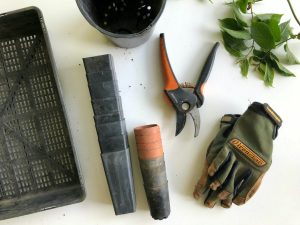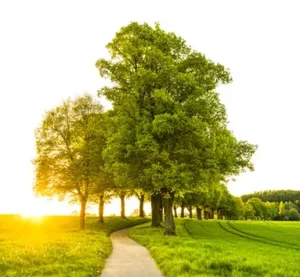Tree Removal Cost

Tree Removal Cost
It is human nature to search for the cheapest time of year for tree removal, but it’s not always possible.
Nationally, the average price for removing a tree is about $850, but that can change dramatically and painfully for your budget depending on the size of the tree, its location, and if you want the stump and roots removed with it.
However, you can, in general, use one trick for cheap tree removal, which can reduce the price by about half.
In the summer months, trees are in full bloom, branches are heavy with fruits, flowers, and leaves are bursting with green, they’re getting that much sunlight.
It is during these months that arborists and tree services are at their busiest, scaling up and down tall trees, trimming, pruning, and generally tending to the trees’ well being.
Now would not be a good time to ask how much does tree removal cost. However, free tree removal services may be available, such as free tree removal for seniors or free tree removal in exchange for wood.
Not only would you have to join the list of clients they already have booked, but the price will probably convince you that that tree teetering precariously over your house will hang in there for just a little bit longer.
It will be better to wait until the sun has shifted its attention to another part of the country and the weather has turned decidedly chillier before you try to lower your tree removal cost by removing trees in winter.
The cheapest time of year for tree removal has to be the winter months of February and March, classed as the dormant period for trees when the leaves are gone, the branches are bare, and the ground is frozen.
This time of year is regarded as ideal for removing a tree, and it is also beneficial for the environment at the same time. With the surrounding ground being frozen, there will be less upheaval to the neighboring flora when the stump and roots are being dug up.
But best of all, most of the tree companies are low on work and are offering discounts to get work in to keep them busy through these few slow months.
So, if that teetering tree hasn’t teetered all the way over, now would be a good time to ask what a good price for tree removal is.
How Much To Get Trees Cut Down: How Much Do Arborists Charge?
It is important to recognize that arborists are qualified in their area of expertise which is arboriculture. They have undergone lengthy exams, gained certifications over years of study, and know trees from the roots to the crown.
A qualified arborist will charge anywhere from $230 up to $2,000 for a tree removal service depending on the size, location, and complexity.
That is not to say that a local tree company will deliver an inferior service and there will be several in your area that will have an online presence to verify if is it always cheaper to remove a tree in winter and to get competitive quotes.
The Best Time of Year To Hire Tree Service: How Much Does It Cost To Have a Tree Trimmed?
Even though it is not as severe an undertaking as cutting down an entire tree, trimming requires the expertise of a specialist so it is done correctly.
For instance, some tree companies may advise “topping,” or removing the top branches from your trees, expanding the service that you had initially called them in for, actually causing harm rather than help.
An unnecessary procedure like this may cause the tree to become stressed, prone to other illnesses, and possibly other major health problems. Certain species can also be more expensive.
By using a certified arborist at the cheapest time of year for tree removal, any undetected diseases lurking among the leaves could be detected while the tree is being examined, and if any problems are discovered they can be treated before it becomes fatal.
A company Inexperienced and untrained in disease detection could easily overlook any growing spores or fungi, and just remove the few dead branches without getting to the root of the problem.
A tree removal cost calculator would reveal the best time of year to hire their services, which is normally the slow winter season, and would also require information such as:
Type of Tree
Height of the tree
Width of the tree
Location of the property
Trim or pruning required
Root removal
Trunk and stump removal
Number of trees
Start date
Financing required
There are a few signs that no matter how long a tree has been in your yard that is time for it to be uprooted and hauled away.
Storm damage, pests, or a disease that has run rampant throughout the tree, weakening the trunk and roots, can be a clear sign that it’s time to call in the professionals.
The trick is knowing how to negotiate tree removal.
A tree specialist can determine if a tree is salvageable by determining if removal is the only option if there is a danger to property or persons if it falls over, or just if the tree is dying.
Several clear signs that a tree is perishing are dead branches, the trunk becoming hollow and weak, or the bark and leaves appearing lifeless.
Occasionally, a simple tree root problem can end up being the reason for its removal.
Certain trees have roots that spread far and wide in the search for water and nutrients, and they let nothing stand in their way.
In fact, so strong are some roots that they have broken through asphalt, and paving stones, overbalanced nearby trees, and even threatened the foundations of houses.
In these scenarios, action needs to be taken regardless of whether it is the cheapest time of year for tree removal or if you have to pay the going rate to prevent any potentially expensive property repairs.
There is a feasible method to get a 50% discount, however. Let’s have a look at how that could be possible.
How Can I Save on Tree Removal if I Need It Done in the Busy Season and Not in the Cheapest Time of Year for Tree Removal
When the quote is received from a landscaping company it can sometimes be a shock to the system, even after the arborist has explained in detail that the price is what it is due to the awkward location of the tree that makes extracting it difficult.
The phrase back burner immediately springs to mind along with waiting for the cheapest time of year for tree removal.
But because you have procrastinated long enough already, you decide that now is the time to learn how to negotiate tree removal prices so the quote is at least within arms reach of your budget.
Savings can be made by clearing away any obstructions near the trunk that will restrict the contractor or any machinery from getting close to the tree to be removed. But a trick that can shave off nearly 50% of the quote is where the trunk is cut from the stump.
It is well known that stump removal is the labor-intensive segment of tree removal that not many tree companies relish undertaking.
Why? Because it takes time away from more lucrative jobs that are a lot easier and quicker to do. You can learn how to kill a tree stump yourself and save funds.
Regardless of whether it is the cheapest time of year for tree removal, negotiating with them to cut the trunk free just above ground level will save a bundle. Then since the majority of the hard work has been done, the remainder of the tree stump can be removed by hiring a grinder for a couple of hours to chop it down into more manageable chunks.
Within a few hours, the stump can be cut it free, all the roots removed, and the hole filled in.
How Much To Cut Down a 50-Foot Pine Tree?
Even if you wait for the cheapest time of the year for tree removal, the size of your tree is still going to dictate how much it is going to cost to uproot it and haul it away. Pricing can be based on certain size categories, and the bigger the tree the pricier it is.
These prices are not cast in stone and can also vary between states, as well as how easy it is to fully extract the tree due to access or overhead obstructions. Even the girth of the trunk can influence the final price and many online calculators will request this information.
Free Tree Removal and Free Tree Removal in Exchange for Wood
You may be surprised to learn that it is possible to get your tree cut down and removed from your property for free, irrespective of if it is the cheapest time of year for tree removal.
In some localities, for example, there are programs that offer free tree removal for seniors to avoid potential risks brought on by decaying, dead, or dying trees, and also households with lower incomes can get assistance.
About Holladay, Utah
Holladay is a city in central Salt Lake County, Utah, United States. It is part of the Salt Lake City, Utah Metropolitan Statistical Area and abuts the Wasatch National Forest. The population was 31,965 at the 2020 census, a significant increase from 14,561 in 2000 when the first area incorporated from Salt Lake County. The city was incorporated on November 29, 1999, as Holladay-Cottonwood, and the name was shortened to Holladay on December 14 of that year. It was reported in the 1990 census as the Holladay-Cottonwood CDP.
Neighborhoods in Holladay, Utah
Holladay Park, North Holladay, Holladay, Holladay City Hall Park, Mount Olympus
Things To Do in Holladay, Utah
Bus Stops in Holladay, Utah to Truco Services, Inc.
Bus Stop in Holladay Blvd @ 4730 S Holladay, Utah to Truco Services, Inc.
Bus Stop in Holladay Blvd @ 5930 S Holladay, Utah to Truco Services, Inc.
Bus Stop in Holladay Blvd @ 5772 S Holladay, Utah to Truco Services, Inc.
Bus Stop in Murray Holladay Rd @ 1315 E Holladay, Utah to Truco Services, Inc.
Bus Stop in Holladay Blvd @ 4963 S Holladay, Utah to Truco Services, Inc.
Bus Stop in Highland Dr @ 4805 S Holladay, Utah to Truco Services, Inc.
Bus Stop in Holladay Blvd @ 5451 S Holladay, Utah to Truco Services, Inc.
Bus Stop in Holladay Blvd @ 6175 S Holladay, Utah to Truco Services, Inc.
Bus Stop in Holladay Blvd @ 5571 S Holladay, Utah to Truco Services, Inc.
Bus Stop in 2300 E @ 4550 S Holladay, Utah to Truco Services, Inc.
Bus Stop in Holladay Blvd. @ 5270 S Holladay, Utah to Truco Services, Inc.
Bus Stop in Holladay Blvd @ 5390 S Holladay, Utah to Truco Services, Inc.
Driving Directions in Holladay, Utah to Truco Services, Inc.
Driving Directions from Arbor Works to 4640 Commerce Dr, Murray, UT 84107, USA
Driving Directions from Doug's Tree Services to 4640 Commerce Dr, Murray, UT 84107, USA
Driving Directions from Amen Trees to 4640 Commerce Dr, Murray, UT 84107, USA
Driving Directions from Evergreen Lawn Pros to 4640 Commerce Dr, Murray, UT 84107, USA
Driving Directions from Andrew's tree removal to 4640 Commerce Dr, Murray, UT 84107, USA
Driving Directions from K & C TREE SERVICE EXPERTS to 4640 Commerce Dr, Murray, UT 84107, USA
Driving Directions from Woodruff Tree Trimming and Removal to 4640 Commerce Dr, Murray, UT 84107, USA
Driving Directions from Hidden Oak Tree Care to 4640 Commerce Dr, Murray, UT 84107, USA
Driving Directions from Advanced Tree and Plow Experts to 4640 Commerce Dr, Murray, UT 84107, USA
Driving Directions from Tim's Tree Care to 4640 Commerce Dr, Murray, UT 84107, USA
Driving Directions from Reliable Tree Care to 4640 Commerce Dr, Murray, UT 84107, USA
Driving Directions from A Swedin Tree Expert to 4640 Commerce Dr, Murray, UT 84107, USA
Reviews for Truco Services, Inc. Holladay, Utah
Marissa Burton
TruCo is a great company to work with for your commercial landscaping and snow removal needs! Rob is excellent to work with. He is very timely in providing quotes and has a lot of great feedback and suggestions to provide on what will look great, fit within your budget, and is knowledgeable on plants that will thrive with Utah's ever changing weather conditions. I have been impressed with TruCo's landscape maintenance as well as landscape projects which have had a quick turnaround time. I would highly recommend using TruCo!
Yvonne Olson
I experienced excellent all around service from landscape improvement design, scheduling and professional installation completed within the timeline we discussed. Rob, the manager does an excellent job of communicating, overseeing the install crew and making sure his customers are 100% satisfied with the job. Highly recommend TruCo for all landscaping needs.
Heather Whiting
We hired TruCo to do a new install of sprinklers, sod, spigot, and bury downspouts. We even have a wifi transmitter for our control box we can access from an app on our phones! We absolutely love the professionalism and quality of their work!! Our sales rep Pete was the best to work with, we highly recommend him to anyone in the market for landscaping. It was awesome seeing the finished results and we're incredibly excited to enjoy our new space!
Jan Merideth
TruCo installed all of our plants, trees and shrubs, drip lines, and boulders. Then they installed our amazing beautiful firepit. We loved the results and they guarantee all plants and trees up to a year. They were great and easy to work with. They listened to our needs and wants and met them 100%. Our HOA sent us a letter telling us they appreciate all the work and the way our yard looks and let us know we added value to the property. Win/Win
Michael Sorensen
Avoid working for this company. They will promise you things to get you in, then tell you there is no documentation about said things. Extremely unprofessional. Update to response - please dont try to justify. PTO was promised by the hiring manager on day 1 due to the conditions. Your company refusing to honor the agreement and tell me that there is no documentation is the problem. I quit after being told that you would not honor the PTO, not before.

